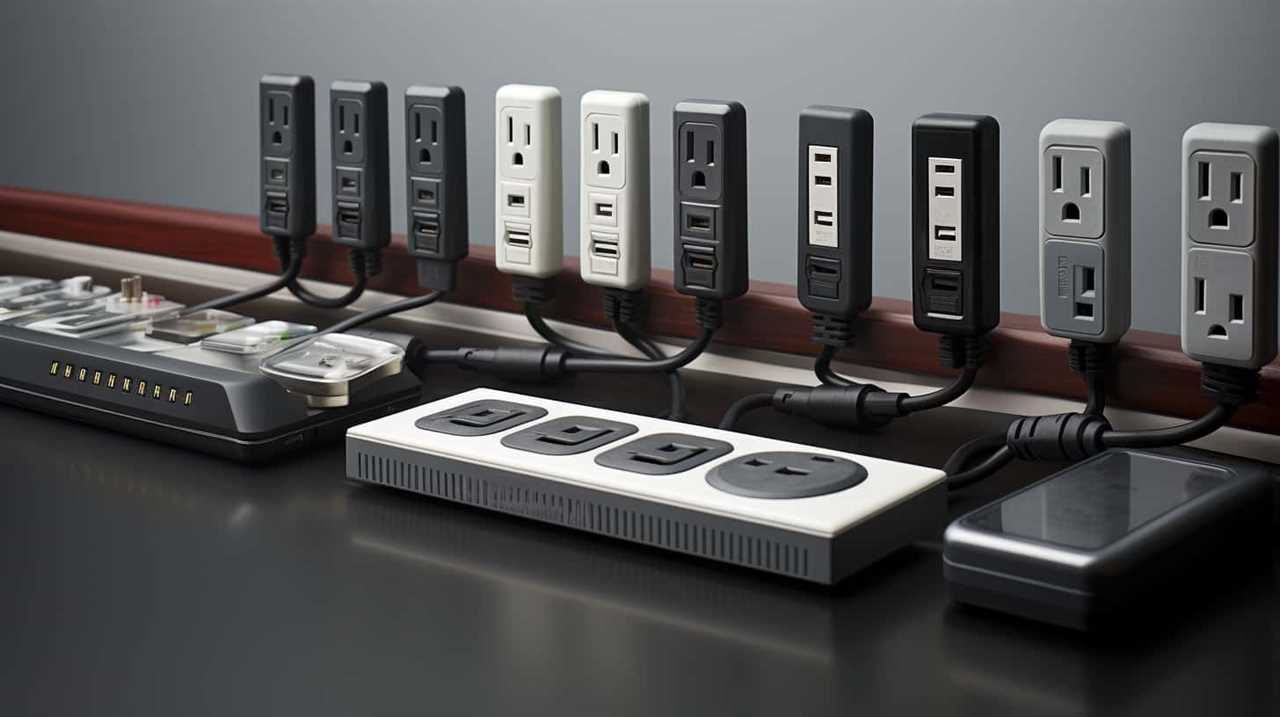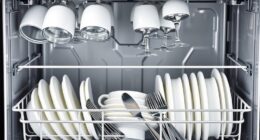We’ve all experienced the frustration of trying to plug multiple appliances into just one outlet.
But can you plug appliances into a surge protector? The answer is yes, but it’s important to understand the ins and outs of surge protectors to ensure the safety of your devices.
In this article, we’ll delve into what surge protectors are, how they work, and which appliances can be safely plugged into them.
So let’s dive in and master the art of protecting our appliances from power surges.
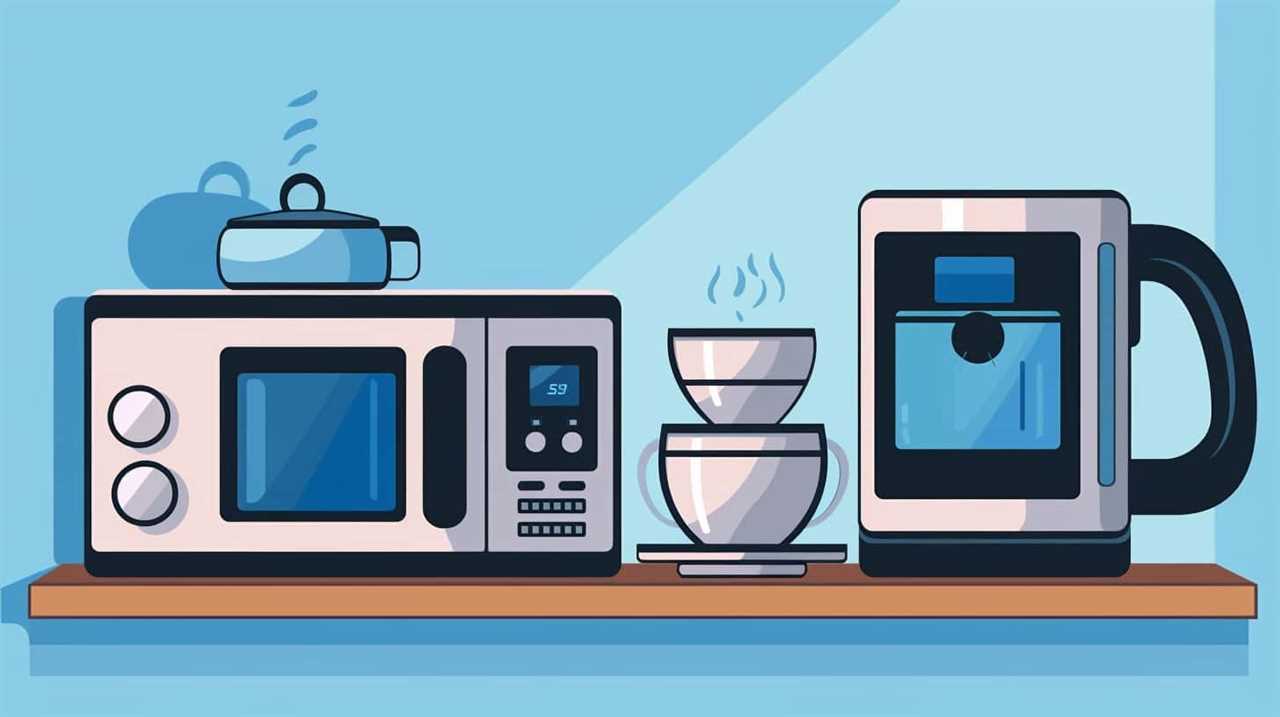
Key Takeaways
- Surge protectors are designed to protect appliances from voltage spikes by diverting excess voltage away from devices.
- It is important to consider the wattage compatibility and capacity limits of surge protectors when plugging in appliances.
- Surge protectors have a limited lifespan and may not be suitable for high-power appliances like refrigerators and air conditioners.
- Additional measures such as proper grounding, whole-house surge protection, and regular inspection and maintenance of the electrical system can further protect appliances from power surges.
What Is a Surge Protector
A surge protector is an essential device that provides protection against electrical surges. It acts as a barrier between your electronic devices and the power source, safeguarding them from sudden spikes in voltage.
There are different types of power strips available in the market, each offering various features to suit different needs. Some surge protectors come with multiple outlets, USB ports, and even Ethernet or coaxial cable connections. They’re designed to handle different power loads and have varying joule ratings, indicating their capacity to absorb energy from power surges.
The benefits of using a surge protector are numerous. It not only protects your expensive electronic equipment from damage but also prevents data loss and potential fire hazards. Additionally, surge protectors often come with a warranty to ensure their effectiveness and provide peace of mind to the user.
How Does a Surge Protector Work
To understand how a surge protector works, we need to delve into the inner workings of this essential device. Surge protectors are crucial for protecting electronic devices from power surges, which can cause irreparable damage. Here are five key points to consider:

- Voltage regulation: Surge protectors monitor the voltage of the incoming electrical supply and regulate it to ensure it stays within safe limits.
- Diverting excess voltage: When a power surge occurs, surge protectors redirect the excess voltage away from your electronic devices and into the grounding wire.
- Joule rating: Surge protectors have a joule rating, which indicates their capacity to absorb the energy from power surges. Higher joule ratings provide better protection.
- Clamping voltage: This refers to the voltage level at which the surge protector starts diverting excess voltage. A lower clamping voltage is preferable for better protection.
- Type of surge protector: Consider factors like the number of outlets, the presence of USB ports, and the warranty when choosing the right surge protector for your needs.
Understanding how surge protectors work is essential for selecting the right one to safeguard your electronic devices.
Now, let’s move on to discussing the types of appliances that can be plugged into a surge protector.
Types of Appliances That Can Be Plugged Into a Surge Protector
When considering the types of appliances that can be plugged into a surge protector, it’s important to take into account the compatible wattage of the appliance. Surge protectors have limitations in terms of the amount of power they can handle, so it’s crucial to ensure that the wattage of the appliance falls within the specified range.
Failing to do so may result in the surge protector being overloaded and potentially causing damage to both the appliance and the surge protector.
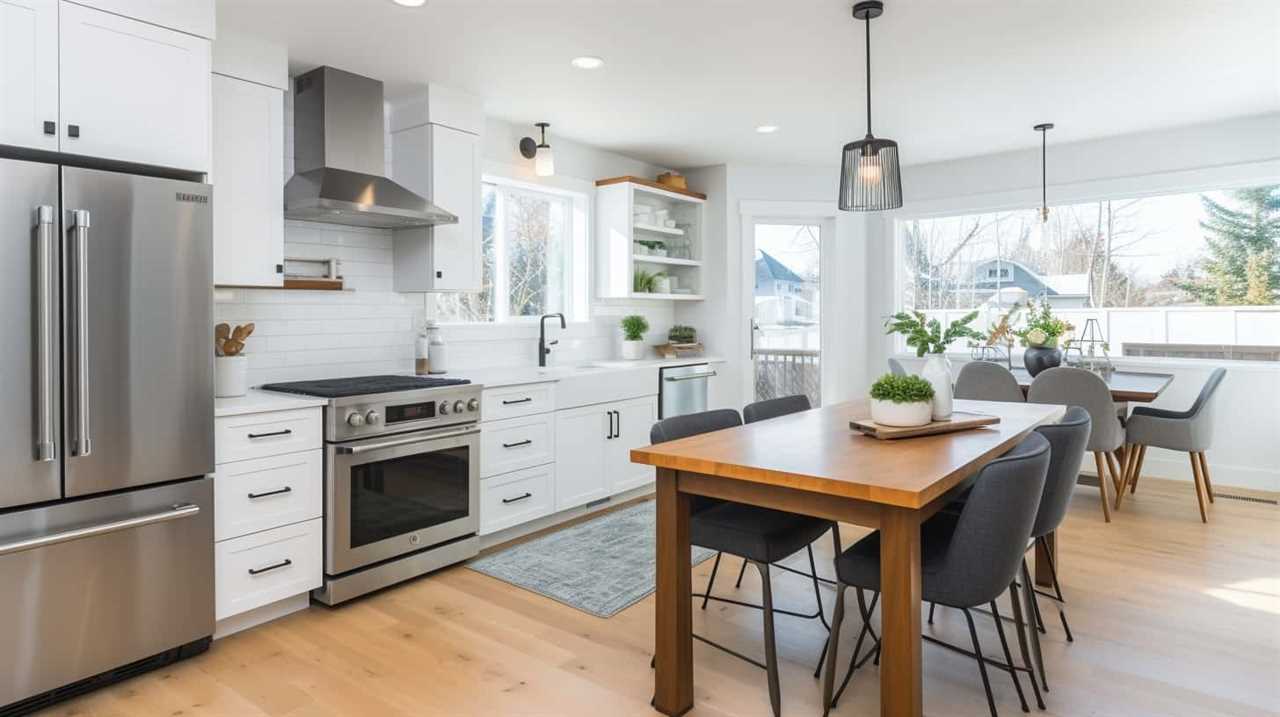
Compatible Appliance Wattage
We recommend considering the wattage compatibility of appliances before plugging them into a surge protector. This is important because surge protectors have specific capacity limits, and exceeding these limits can lead to overheating and potential damage to both the surge protector and the connected appliances.
To ensure compatibility, here are some key points to consider:
- Check the wattage rating of the surge protector: Surge protectors have a maximum wattage capacity, usually indicated on the packaging or the device itself. Make sure this rating is higher than the total wattage of the appliances you plan to connect.
- Calculate the wattage of your appliances: Each appliance has a specific wattage requirement, which can usually be found on the appliance itself or in the user manual. Add up the wattage of all the appliances you intend to plug into the surge protector to ensure it falls within the capacity of the surge protector.
- Consider the power-hungry appliances: Some appliances, such as refrigerators or air conditioners, have higher power requirements and can cause a surge in electricity consumption when they start up. Take these power-hungry appliances into account when calculating the total wattage.
- Prioritize essential appliances: If you have multiple appliances but limited surge protector capacity, prioritize the essential ones that require surge protection the most. This can include sensitive electronics like computers, televisions, or audio systems.
- Consider upgrading your surge protector: If you frequently find yourself exceeding the wattage capacity of your surge protector, it may be time to invest in a higher capacity model. This will ensure the safety and longevity of your appliances and surge protector.
Surge Protector Limitations?
In considering the compatible appliance wattage and surge protector compatibility, it’s important to understand the limitations of surge protectors and which types of appliances can be safely plugged into them.
Surge protectors are designed to protect electronic devices from power spikes and surges. However, they’ve their limitations. Surge protectors have a lifespan and can wear out over time, so it’s important to replace them periodically to ensure continued protection.

Additionally, surge protectors aren’t designed to handle high-power appliances such as refrigerators, air conditioners, or washing machines. These appliances require a dedicated circuit or a voltage stabilizer to protect them from power fluctuations.
It’s also worth noting that surge protectors are different from power strips. While power strips provide multiple outlets, they don’t offer the same level of protection as surge protectors.
Therefore, it’s crucial to use the appropriate type of device for your specific needs to ensure the safety of your appliances.
Appliances That Should Not Be Plugged Into a Surge Protector
When it comes to appliances that shouldn’t be plugged into a surge protector, there are a few important points to consider.

First, high power devices such as air conditioners and refrigerators should be plugged directly into a wall outlet to ensure they receive the necessary power.
Second, heat-producing appliances like space heaters and irons should also be plugged directly into a wall outlet to prevent overheating and potential fire hazards.
Lastly, major kitchen appliances such as stoves and ovens shouldn’t be plugged into a surge protector due to their high power requirements.
High Power Devices
Our research has found that certain high power devices, such as industrial machinery and large appliances, shouldn’t be plugged into a surge protector. These devices have a high power consumption and can cause voltage fluctuations, which can potentially overload the surge protector and render it ineffective.
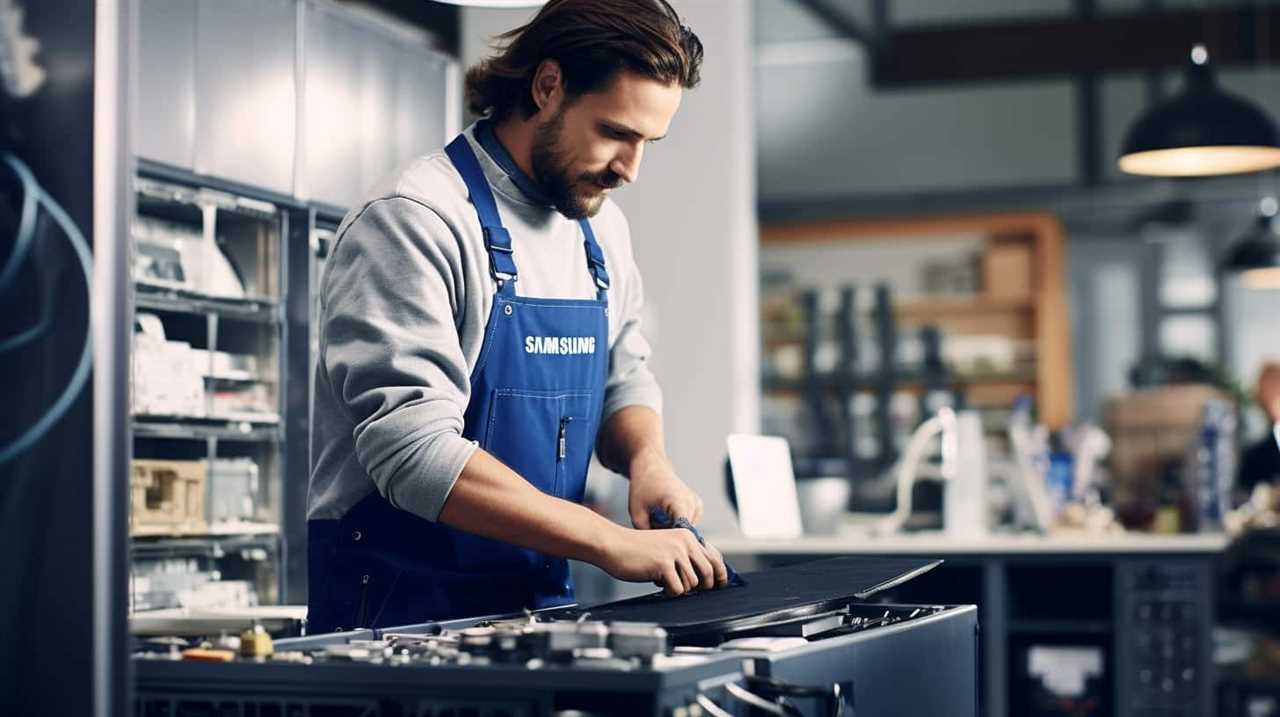
It’s important to consider the specific requirements of each device and ensure that they’re plugged directly into a dedicated power outlet. Plugging high power devices into a surge protector can pose serious safety risks and may even lead to damage or malfunction of the device itself.
Here are five examples of high power devices that shouldn’t be plugged into a surge protector:
- Air conditioners
- Refrigerators
- Washing machines
- Electric cooktops
- Water heaters
These devices draw a significant amount of power and should be connected directly to a reliable power source to ensure their proper functioning and safety.
Heat-Producing Appliances
Now let’s talk about the heat-producing appliances that shouldn’t be plugged into a surge protector.
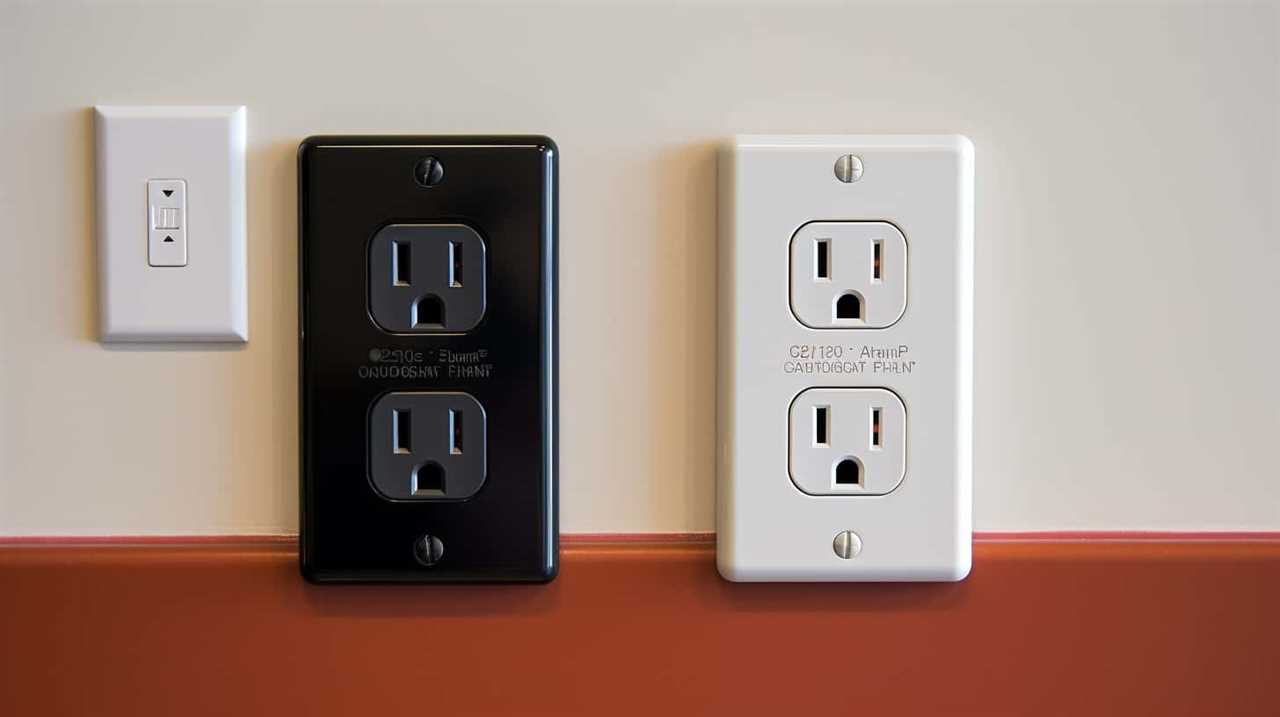
When it comes to heat-producing appliances, such as space heaters, toaster ovens, and irons, it’s important to follow specific safety precautions. These appliances draw a significant amount of power and generate heat as a byproduct of their operation.
Plugging them into a surge protector can overload the circuit and cause the surge protector to overheat, potentially leading to a fire hazard.
To ensure the safety of your home and appliances, it’s recommended to directly plug these heat-producing appliances into a properly rated wall outlet.
Additionally, always make sure that the circuit is capable of handling the appliance’s power requirements to prevent any electrical issues or damage.

Major Kitchen Appliances
We recommend not plugging major kitchen appliances into a surge protector. These appliances draw significant amounts of power and may overload the surge protector, rendering it ineffective.
It’s important to understand which appliances fall into this category to ensure their safe and efficient operation. Here are five common household appliances that shouldn’t be plugged into a surge protector:
- Refrigerators
- Dishwashers
- Ovens
- Stoves
- Range hoods
These major kitchen appliances require a direct connection to a dedicated circuit to function properly. Plugging them into a surge protector may cause the protector to trip or fail, putting the appliance at risk and potentially causing damage to the electrical system.
To ensure the safety and longevity of your major kitchen appliances, it’s best to plug them directly into a wall outlet.

Now, let’s move on to the next section and learn some tips for using a surge protector effectively.
Tips for Using a Surge Protector Effectively
To ensure optimal performance and protection, it’s important to follow these tips when using a surge protector.
- When selecting a surge protector, choose from reputable brands such as Belkin, APC, and Tripp Lite. These brands are known for their quality and reliability in protecting your appliances from power surges.
- In terms of maintenance, regularly inspect your surge protector for any signs of wear or damage. Replace it immediately if you notice any frayed wires or cracked casings.
- It’s also crucial to keep your surge protector clean and free from dust and debris, as this can affect its effectiveness.
- Additionally, avoid overloading your surge protector by plugging in too many appliances. This can lead to overheating and decreased protection.
By following these maintenance tips, you can ensure that your surge protector functions properly and provides the necessary protection for your appliances.
Now, let’s move on to discussing additional measures to protect your appliances from power surges.
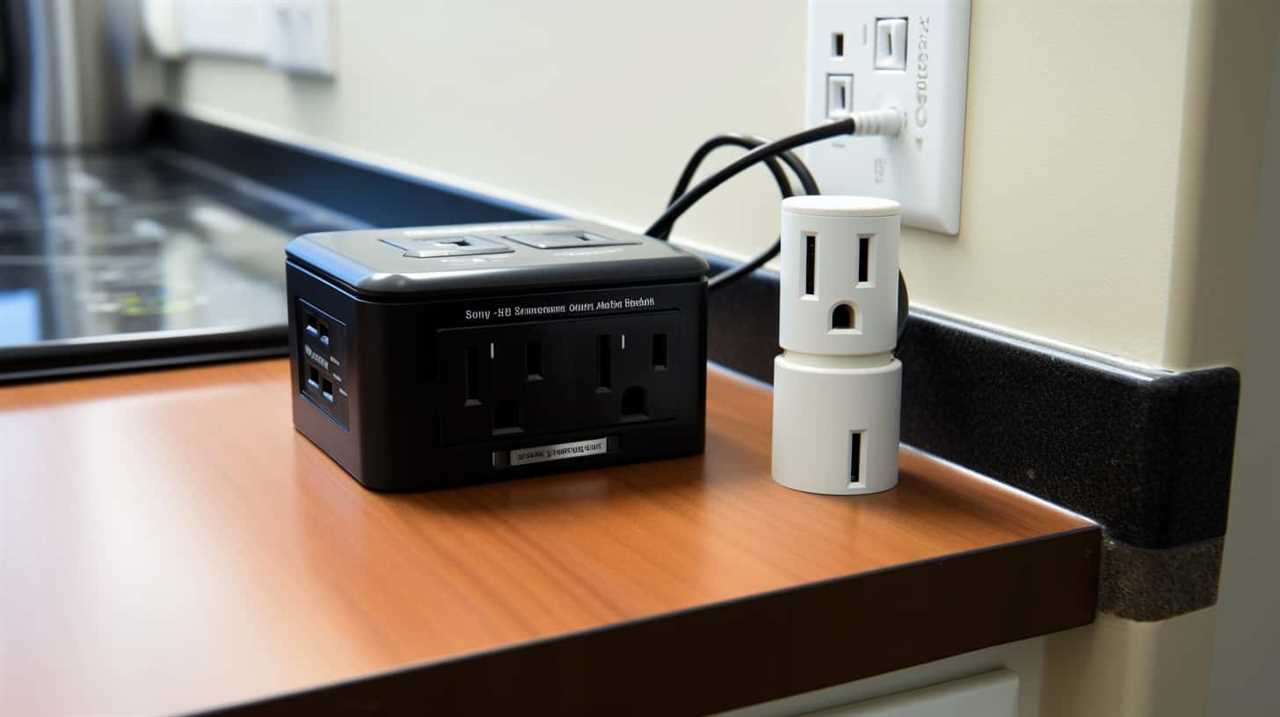
Additional Measures to Protect Your Appliances From Power Surges
While it’s important to use a surge protector for your appliances, there are additional measures you can take to further protect them from power surges. Here are five additional steps you can consider:
- Ensure proper grounding: Grounding is crucial in surge protection as it provides a safe path for excess electrical energy to dissipate. Make sure your electrical system is properly grounded to minimize the risk of power surges.
- Install whole-house surge protection: Consider investing in a whole-house surge protector that provides protection for all electrical devices in your home. This additional layer of protection can help safeguard your appliances from surges originating from outside sources.
- Use surge protectors specifically designed for home entertainment systems: Home entertainment systems, with their sensitive electronic components, require specialized surge protectors. Look for surge protectors that offer high joule ratings and EMI/RFI filtering to protect your expensive audio and video equipment.
- Unplug appliances during storms: Lightning strikes and power surges can occur during storms. To be extra cautious, unplug your appliances during severe weather to prevent any potential damage.
- Regularly inspect and maintain your electrical system: Schedule regular inspections of your electrical system to identify any potential issues that could lead to power surges. Maintain your system to ensure optimal performance and protection.
Frequently Asked Questions
Can I Plug Multiple Appliances Into a Surge Protector at the Same Time?
Yes, you can plug multiple appliances into a surge protector at the same time. Surge protectors are designed to prevent damage to your appliances and can also handle the power load of multiple devices.
Is It Safe to Plug in a Surge Protector Into an Extension Cord?
Using a surge protector with an extension cord poses potential hazards. To ensure safety, follow best practices such as avoiding overloading the circuit, using heavy-duty cords, and regularly inspecting for damage.
Can I Plug My Refrigerator or Other Major Appliances Into a Surge Protector?
Yes, it is generally safe to plug major appliances like refrigerators into a surge protector. However, it’s important to ensure that the surge protector is rated for the wattage of the appliance to avoid potential damage.

Are Surge Protectors Necessary for Small Electronic Devices Like Smartphones and Tablets?
Surge protectors are essential for small electronic devices like smartphones and tablets. They provide benefits like preventing voltage spikes and protecting delicate components. Common misconceptions include the belief that these devices don’t need surge protection.
How Often Should Surge Protectors Be Replaced?
Surge protectors should be replaced every 2-3 years to ensure optimal protection. While they can’t prevent direct lightning strikes, they do provide a safeguard against power surges caused by lightning strikes near your home.
Conclusion
In conclusion, surge protectors are essential in safeguarding your appliances from power surges.
By understanding what appliances can be plugged into a surge protector and following the tips for effective use, you can prolong the lifespan of your devices.

Remember, a surge protector is like a knight protecting your appliances from the treacherous thunderstorms of power surges.
So, plug them in and let them do their noble duty.

